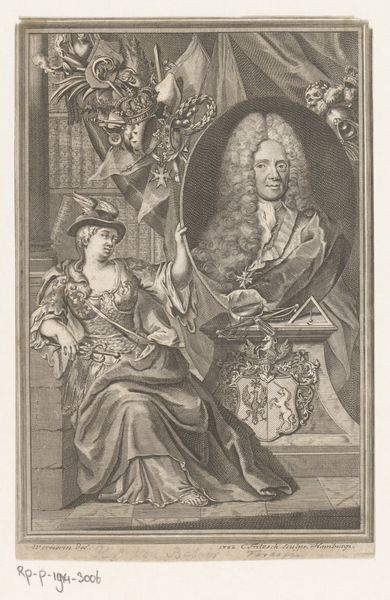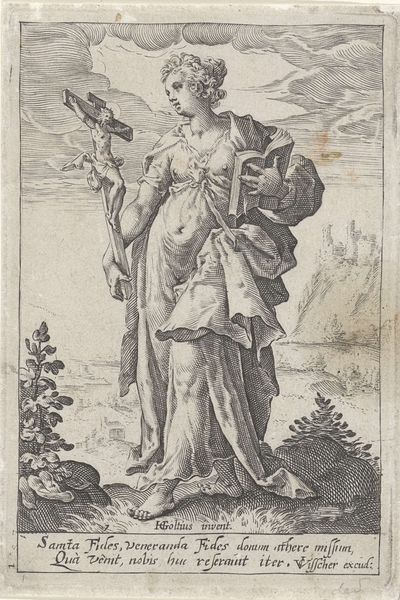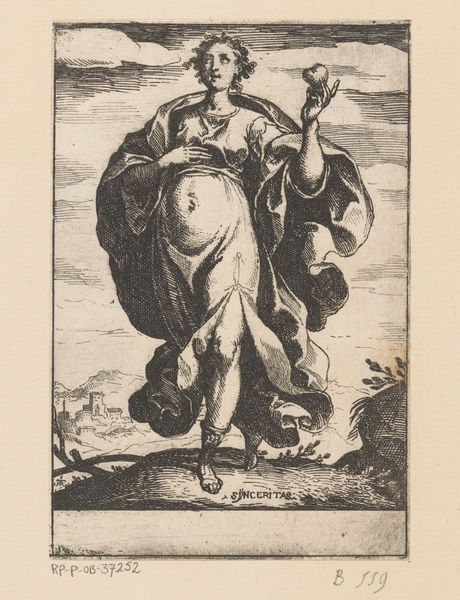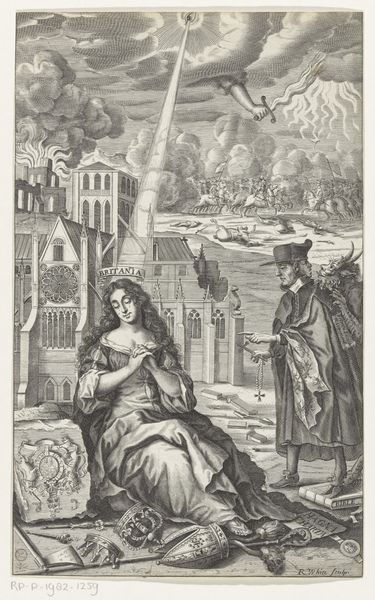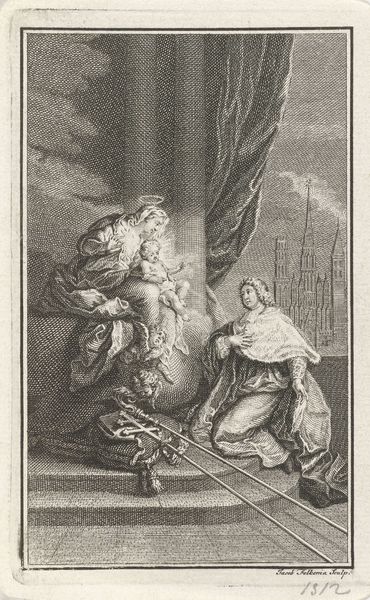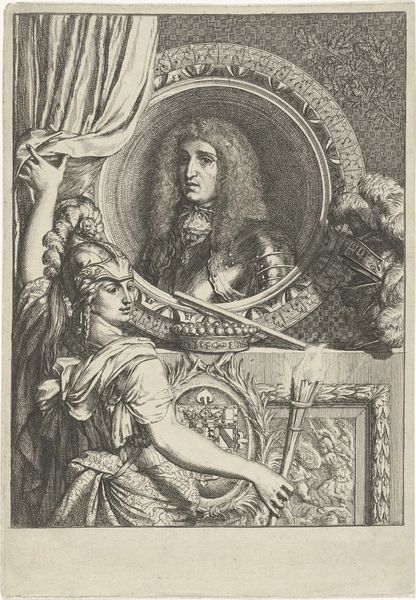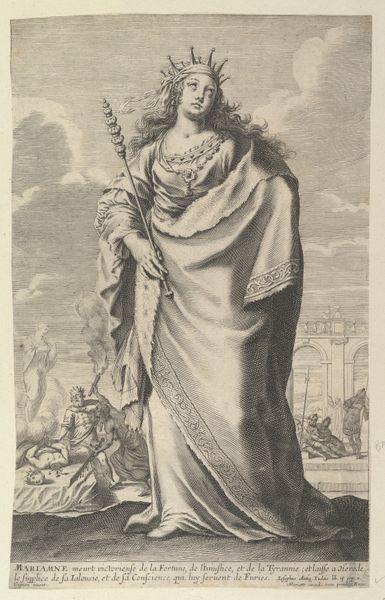
drawing, print, intaglio, engraving
#
drawing
#
baroque
# print
#
intaglio
#
figuration
#
history-painting
#
engraving
Dimensions: Sheet: 9 in. × 7 1/16 in. (22.9 × 18 cm)
Copyright: Public Domain
Curator: Here we have an engraving from between 1620 and 1670, attributed to Gr\u00e9goire Huret, titled "Judith with the Head of Holofernes." It's a striking depiction of the biblical heroine, currently held in the collection of the Metropolitan Museum of Art. Editor: My first impression is one of conflicted triumph. Judith's pose is almost regal, but her expression seems more troubled than victorious. It's not the jubilant celebration I was expecting, and I wonder if it has to do with how she is portrayed versus what her story symbolizes. Curator: Exactly! The baroque era frequently wrestled with morality, didn't it? The source material is a moment when Judith saved her people by assassinating Holofernes. Huret doesn’t shy away from showing Judith's power. I mean, the blade itself looks polished! But how much does he delve into the socio-political implications? Editor: That's my concern, too. In this rendition, the engraving makes her look more like an aristocrat than a freedom fighter; there is something to be said for how respectability can impact the narrative. Judith holds the severed head with what could read as nonchalance or pride rather than conflicted horror. Are we celebrating female strength, or are we fetishizing violence in this scene? Curator: It's also crucial to look at the setting during the rise of powerful queens in Europe. Think about the complex figure of someone like Christina of Sweden; she wielded incredible power and flouted societal norms, but still navigated a patriarchal structure. Were these artworks subtle power plays that attempted to put female leadership into an accepted cultural framework? Or perhaps the inverse—attempts to portray these moments without delving too deeply into female sovereignty. Editor: Exactly! The story is definitely an example of women using whatever agency they can scrape to fight against oppression. Is it presented this way here? I am not so sure. Maybe the intent was there but something was lost in the representation? Curator: These kinds of engravings played a pivotal role in disseminating biblical and historical narratives to a wider public. Through prints, works like this entered homes and created common cultural touchstones. Editor: Right. We can only imagine how audiences may have debated her meaning within their communities. That is the exciting part, isn’t it? That dialogue around art like this is still going today! Curator: Indeed. I suppose examining how a woman's story has persisted across cultures and eras allows one to contemplate history more widely. Editor: Exactly, and how representation can still shape public perceptions.
Comments
No comments
Be the first to comment and join the conversation on the ultimate creative platform.




